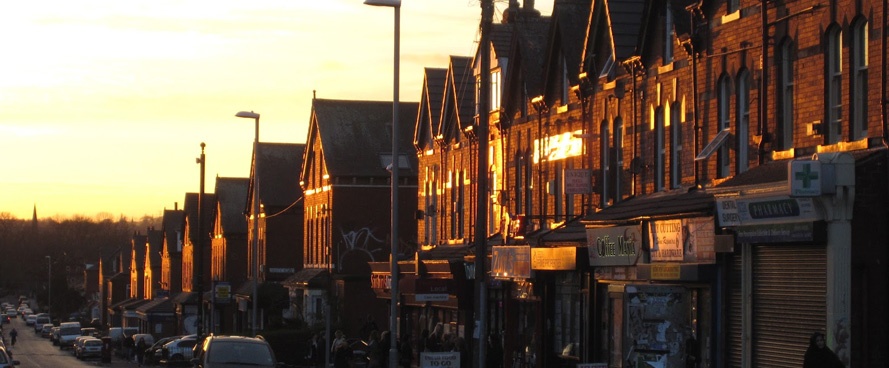Hyde Park, Leeds. The centre of the student experience for many and the heart of a student community thanks to its proximity to campus, Woodhouse Moor and accessibility to town centre and transport.
But, the reality is that students are not the only ones to call Hyde Park their (temporary) home. Many families also reside in Hyde Park. The area is culturally and religiously diverse with three mosques, one Hindu temple, two Anglican churches and with a sizeable South Asian Community. Although 54.2% of the population were students aged 20-24 in 2017, there still remains 17.1% of the population who were full-time employed rather than part-time employment or full-time studying. These facts point to the existence of a non-student community in Hyde Park.
According to Rightmove, the average property price in Leeds is £208,803 compared to just £166,673 in Hyde Park. Therefore, Hyde Park is a significantly cheaper area to live in than other suburbs in Leeds. It can then be deduced that the non-student population living here are likely low-income families, couples and individuals who also want to take advantage of these low property prices.
But are students driving up house prices and pushing these people out?
Increasing house prices usually characterise the gentrification process combined with an increased ownership by private landlords. Hyde Park has a much larger percentage of private rented properties than the Leeds average at 66.6% compared to around 20%. According to Zoopla, house prices in Hyde Park have risen by 26% in last five years, and 36% in the last 10. This suggests a trend in landlords converting properties for student accommodation.
The nationwide gentrification process has been most noticed in London’s east-end becoming a hipster hotspot as seen in the popular example of Shoreditch and more recently Dalston which has seen a 60% property price increase in just five years. Run-down areas get revived and become trendier than they were. This has not only been seen in London but also in the suburbs of Sheffield, Birmingham and Bristol.
Gentrification is also characterised by a change in an area’s amenities. Hyde Park displays a Continental Supermarket selling South Asian goods alongside a a newer fairy-lit cocktail bar (East Village) and coffee shops producing perfect latte art and trendy food (Coffee on the Crescent, Hyde Park Book Club, LS6). These latter shops cater shops for students as well as the abundance of cheap alcohol stores.

So, student in Hyde Park have undoubtedly changed the face of its shops and businesses but as students we also support the existing businesses which do not specifically cater for students such as the small authentic Thai cafe on Hyde Park Road.
There are however problems with the seasonality of this support and the social effects of longer-term residents living alongside a student population notably noise pollution and litter.
However, as if often seen in the gentrification process, the housing quality of Hyde Park has not improved or changed at all. Besides some council housing constructed to replace slum clearance where Hyde Park Road meets Woodsley Road, housing stock is still traditional Victorian and Edwardian back-to-back brick terraces. There has not been any large-scale construction of flats or any large infrastructure projects at all as seen in London’s examples of gentrification. Also, media reports about crime and ‘the worst roads to live on in Hyde Park’ as well as Hyde Park allegedly possessing the one of most burgled street in Britain are abundant.
Are we trying to make Hyde Park trendy hub?
The gentrification process, whether it exists or not, is not intentional either way. Students seek out the cheapest areas to live when looking for student accommodation and landlords have capitalised on this by buying up a large proportion of the cheap housing stock which (unintentionally) makes the area less accessible for lower-income families to move into.
Is it fair that this occurs in order for people to live in a ‘cool’ place? Of course it isn’t.
Who drives the gentrification process and what can we do about it? Is it more to do with the individual choosing where to live or a government-led strategy to upgrade areas and improve the economy?
Whatever the answer is, our impact on lower-income families should not be overlooked or underestimated.
Jasmine Davis
Image credit: https://sbliving.co.uk/area-guide/student-guide-to-hyde-park-leeds-ls6/

